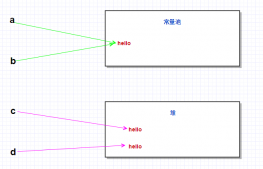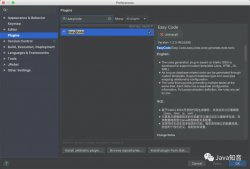本文介绍了JAVA如何获取客户端IP地址和MAC地址 ,分享给大家,具体如下:
1.获取客户端IP地址
|
1
2
3
4
5
6
7
8
9
10
11
12
13
14
15
16
17
18
19
20
|
public String getIp(HttpServletRequest request) throws Exception { String ip = request.getHeader("X-Forwarded-For"); if (ip != null) { if (!ip.isEmpty() && !"unKnown".equalsIgnoreCase(ip)) { int index = ip.indexOf(","); if (index != -1) { return ip.substring(0, index); } else { return ip; } } } ip = request.getHeader("X-Real-IP"); if (ip != null) { if (!ip.isEmpty() && !"unKnown".equalsIgnoreCase(ip)) { return ip; } } return request.getRemoteAddr();} |
为什么不直接使用request.getRemoteAddr();而要在之前判断两个请求头"X-Forwarded-For"和"X-Real-IP"
X-Forwarded-For: client1, proxy1, proxy2, proxy3
其中的值通过一个 逗号+空格 把多个IP地址区分开, 最左边(client1)是最原始客户端的IP地址, 代理服务器每成功收到一个请求,就把请求来源IP地址添加到右边。
所有我们只取第一个IP地址
X-Real-IP,一般只记录真实发出请求的客户端IP
解决用localhost访问ip为0:0:0:0:0:0:0:1的问题
|
1
2
3
4
5
6
7
8
9
10
11
12
13
14
15
16
17
18
19
20
21
22
23
24
25
26
27
28
29
30
31
32
33
|
public String getIp(HttpServletRequest request) throws Exception { String ip = request.getHeader("X-Forwarded-For"); if (ip != null) { if (!ip.isEmpty() && !"unKnown".equalsIgnoreCase(ip)) { int index = ip.indexOf(","); if (index != -1) { return ip.substring(0, index); } else { return ip; } } } ip = request.getHeader("X-Real-IP"); if (ip != null) { if (!ip.isEmpty() && !"unKnown".equalsIgnoreCase(ip)) { return ip; } } ip = request.getHeader("Proxy-Client-IP"); if (ip != null) { if (!ip.isEmpty() && !"unKnown".equalsIgnoreCase(ip)) { return ip; } } ip = request.getHeader("WL-Proxy-Client-IP"); if (ip != null) { if (!ip.isEmpty() && !"unKnown".equalsIgnoreCase(ip)) { return ip; } } ip = request.getRemoteAddr(); return ip.equals("0:0:0:0:0:0:0:1") ? "127.0.0.1" : ip;} |
2.获取客户端MAC地址
|
1
2
|
UdpGetClientMacAddr umac = new UdpGetClientMacAddr(sip);String smac = umac.GetRemoteMacAddr(); |
添加一个获取MAC的时间限制
|
1
2
3
4
5
6
7
8
9
10
11
12
13
14
15
16
17
18
19
20
|
final UdpGetClientMacAddr umac = new UdpGetClientMacAddr(sip);//---长时间获取不到MAC地址则放弃ExecutorService exec = Executors.newFixedThreadPool(1);Callable<String> call = new Callable<String>() { public String call() throws Exception { return umac.GetRemoteMacAddr(); }};try { Future<String> future = exec.submit(call); String smac = future.get(1000 * 1, TimeUnit.MILLISECONDS); loginMonitor.setMacAddress(smac);} catch (TimeoutException ex) { loginMonitor.setMacAddress("获取失败"); logger.info("获取MAC地址超时"); ex.printStackTrace();}// 关闭线程池 exec.shutdown();//--- |
需要先获取IP地址作为参数构造一个UdpGetClientMacAddr
UdpGetClientMacAddr.java
|
1
2
3
4
5
6
7
8
9
10
11
12
13
14
15
16
17
18
19
20
21
22
23
24
25
26
27
28
29
30
31
32
33
34
35
36
37
38
39
40
41
42
43
44
45
46
47
48
49
50
51
52
53
54
55
56
57
58
59
60
61
62
63
64
65
66
67
68
69
70
71
72
73
74
75
76
77
78
79
80
81
82
83
84
85
86
87
88
89
90
91
92
93
94
95
96
97
98
99
100
101
102
103
|
package shmc.commonsys.security.controller;import java.io.IOException;import java.net.DatagramPacket;import java.net.DatagramSocket;import java.net.InetAddress; /** * 主机A向主机B发送“UDP-NetBIOS-NS”询问包,即向主机B的137端口,发Query包来询问主机B的NetBIOS Names信息。 * 其次,主机B接收到“UDP-NetBIOS-NS”询问包,假设主机B正确安装了NetBIOS服务........... 而且137端口开放,则主机B会向主机A发送一个“UDP-NetBIOS-NS”应答包,即发Answer包给主机A。 * 并利用UDP(NetBIOS Name Service)来快速获取远程主机MAC地址的方法 * */public class UdpGetClientMacAddr { private String sRemoteAddr; private int iRemotePort=137; private byte[] buffer = new byte[1024]; private DatagramSocket ds=null; public UdpGetClientMacAddr(String strAddr) throws Exception{ sRemoteAddr = strAddr; ds = new DatagramSocket(); } public final DatagramPacket send(final byte[] bytes) throws IOException { DatagramPacket dp = new DatagramPacket(bytes,bytes.length,InetAddress.getByName(sRemoteAddr),iRemotePort); ds.send(dp); return dp; } public final DatagramPacket receive() throws Exception { DatagramPacket dp = new DatagramPacket(buffer,buffer.length); ds.receive(dp); return dp; } public byte[] GetQueryCmd() throws Exception { byte[] t_ns = new byte[50]; t_ns[0] = 0x00; t_ns[1] = 0x00; t_ns[2] = 0x00; t_ns[3] = 0x10; t_ns[4] = 0x00; t_ns[5] = 0x01; t_ns[6] = 0x00; t_ns[7] = 0x00; t_ns[8] = 0x00; t_ns[9] = 0x00; t_ns[10] = 0x00; t_ns[11] = 0x00; t_ns[12] = 0x20; t_ns[13] = 0x43; t_ns[14] = 0x4B; for(int i = 15; i < 45; i++){ t_ns[i] = 0x41; } t_ns[45] = 0x00; t_ns[46] = 0x00; t_ns[47] = 0x21; t_ns[48] = 0x00; t_ns[49] = 0x01; return t_ns; } public final String GetMacAddr(byte[] brevdata) throws Exception { // 获取计算机名 int i = brevdata[56] * 18 + 56; String sAddr=""; StringBuffer sb = new StringBuffer(17); // 先从第56字节位置,读出Number Of Names(NetBIOS名字的个数,其中每个NetBIOS Names Info部分占18个字节) // 然后可计算出“Unit ID”字段的位置=56+Number Of Names×18,最后从该位置起连续读取6个字节,就是目的主机的MAC地址。 for(int j = 1; j < 7;j++) { sAddr = Integer.toHexString(0xFF & brevdata[i+j]); if(sAddr.length() < 2) { sb.append(0); } sb.append(sAddr.toUpperCase()); if(j < 6) sb.append(':'); } return sb.toString(); } public final void close() throws Exception { ds.close(); } public final String GetRemoteMacAddr() throws Exception { byte[] bqcmd = GetQueryCmd(); send(bqcmd); DatagramPacket dp = receive(); String smac = GetMacAddr(dp.getData()); close(); return smac; } public static void main(String args[]) throws Exception{ UdpGetClientMacAddr umac=new UdpGetClientMacAddr("172.19.1.198"); umac=new UdpGetClientMacAddr("192.168.16.83"); System.out.println(umac.GetRemoteMacAddr()); } } |
以上就是本文的全部内容,希望对大家的学习有所帮助,也希望大家多多支持服务器之家。
原文链接:http://www.cnblogs.com/huangjian2/p/6238236.html














